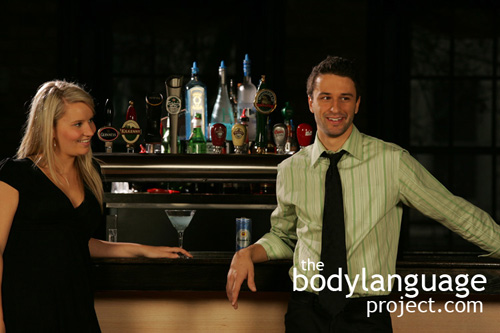As an artifact, glasses can be used to convey nonverbal meaning. Chewing or sucking on the frames of the glasses signifies deep thought. Pens placed in the mouth have the same effect. As we saw with chin stroking, what immediate follows evaluative gestures tells us what sort of decision has been made, be it positive or negative. If arms and legs become crossed, or the body leans back, it means that the person has reached a negative conclusion. The glasses can be shaken from side to side signaling a rejection of an idea which is a tempered way to finger shake – the finger shake by itself indicates a much more powerful message. Boredom can also be signaled with glasses such as folding and unfolding them repeatedly, bending them at the center can indicate agitation, and touching the tips signal tension or stress. Putting the glasses back on means the person wants to see more of the facts, setting them aside can mean that the meeting is over and throwing them aside altogether or dropping them abruptly means a full rejection of the meeting. Quickly anticipating a negative decision can be of assistance to thwart an overt conclusion in effort to leave the door open, even if just a crack. However, obviously, your work is cut out for you to sway someone who is so close to a final decision. You will need to work in overdrive to bring them back from the brink.
Moving the glasses up on the forehead can signal honesty while peering over the glasses is a classic evaluative gesture that signals scrutiny and judgment. The image it invokes in people is that of the discerning librarian or catholic school teacher bearing down on naughty students. The presence of glasses is not paramount to the gesture, but does help make it more salient. With or without glasses it happens by tilting the head downward with the eyes peering onto the subject across the bridge of the nose. With glasses, the gesture includes pulling them forward with the hand and simultaneously peering over them. If the head is cocked to the side it says “Really? You can’t be serious.” The cue cluster also includes arms folded or on the hips, legs crossed, squinted eyes and pursed lips, scowling and or an index finger that wags from side to side (meaning naughty).
Studies show that we also rate wearers of glasses as being more studious, intelligent, sincere and conservative, although having particularly thick glasses negates those positive attributes. We think thick glasses are for those with low social skills who are overly-intelligent (geeks or nerds). While not all of these gestures are perfectly predictive glasses, just like pencils, pieces of paper, folders or books, they are an extension of the hand so carry the same message but in an exaggerated way.



